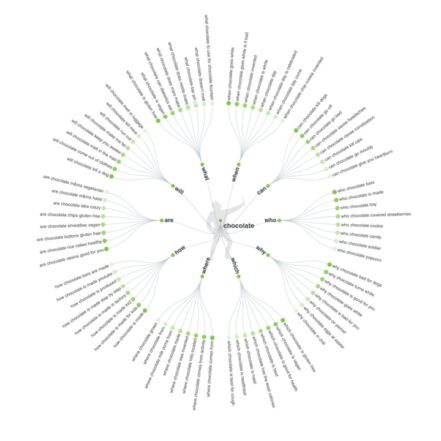How to Write a Blog Post: An 11-Step Guide (Updated for 2024)
Andrew Folkler
If you think back to your days in school, you might remember the times when you had to write essays. You would research a topic, write your composition, edit it, and then submit it for grading. And for most of your essays, that was probably the end of the story.
So a blog post should be similar, right?
If only it were that simple.
As it turns out, writing a blog post is very different from writing an English essay. And if you simply apply the principles of academic writing to online content writing, you will not get the results you were looking for – and chances are, no one will read your post.
So how should you write your blog posts? What structures and frameworks increase the likelihood of your posts being read?
In this article, you will learn the A-Z’s of blog writing. You will go through each step of the blog writing process so that you can write a blog post that will compel your audience to read.
How to Write a Blog Post in 11 Steps
Before diving into how to write a blog, you must first understand what a blog post is.
A blog post (sometimes called a blog article) is an online article that seeks to entertain, educate, or sell to a reader. Blogs tend to be used as part of a larger content strategy to attract new leads and nurture your target audience. Your blog is part of your selling strategy.
If you do not incorporate your blog into your marketing strategy, people might still read it, but that will be the end of their journey with your brand.
So how should you structure your blog articles? Here are 11 steps to writing engaging blog posts.

Step 1: Choose a Compelling Topic
One of the easiest ways to choose compelling topics for your blog is to ask yourself this one question: what problem is your target audience dealing with?
Your target audience is likely to go online to search for advice on a specific challenge they are experiencing. In order to get on their radar, you need to address the pain points they are seeking help with.
You can use several strategies to research the pain points of your target audience. One of the first ways is to read through consumer reviews of your products and your competitors’ products. Product reviews show you exactly what a consumer liked and disliked and whether their purchase helped them solve their problem. When a buyer writes a negative review, they communicate that they feel cheated. They expected a solution, but unfortunately, the product did not deliver.
For example, if you are writing a blog about financial literacy, you might know through product reviews that consumers fear losing their hard-earned money. If you delve deeper into their fears, you might infer they are afraid because of the economy, inflation, or technological advancements. Based on this information, you could write several blog posts based on these topics to help address that emotion of fear.
Another powerful strategy for finding compelling blog topics is to use the tool, Answer the Public, which helps you identify subjects based on what people are searching for online. Let’s say you are looking to write a blog post about chocolate, and you want to know what the most popular searches are related to chocolate.

Here you will see a wide variety of questions that people have searched, all relating to chocolate. You can easily turn each of these search questions into a blog post to attract your target audience to your website. If you leverage this strategy well, you will have myriad compelling topics to choose from.
The last strategy you can use is to conduct a content audit on your competitors. When you audit your competitors’ content, you can identify what they emphasize. Your competitors might focus on a highly niched community or build their content around specific product features. When you study your competitors’ blog posts, you can look for opportunities to write about topics they haven’t addressed. In addition, you can look for ways to better explain a concept they have already blogged about.
Step 2: Conduct Keyword Research
One of the core elements of a blog post is how visible your posts are to your target audience. Visibility matters because everyday, millions of blog posts are published online. While the sheer volume of posts might feel intimidating, you still have a huge opportunity. Search engines like Google, Yahoo!, and Bing use keywords as part of their ranking strategy when showing search results.
This means that conducting keyword research before writing your blog post is essential. One of the best ways to find relevant keywords is to use SEO tools such as Ahrefs, SEMRush, or Ubersuggest. These platforms have keyword research tools that you can use to identify how often a keyword is used as well as how difficult it is to rank for it. Keyword research can help you identify gaps in your competitor’s content while allowing you to create fresh and unique content.
Another excellent tool for your toolbox would be Google Trends. Google Trends is a free tool that Google provides, enabling you to examine search trends based on the time of year. Search results are ranked from 0 to 100, where 0 represents the least frequent searches, and 100 represents the most frequent.
Step 3: Create Irresistible Headlines
Now that you have your research completed, it’s time to start crafting your blog post. The first thing that your readers will see is your headline. Your headline will have to convey the following information to the reader:
- What is the post about?
- What benefit will the reader get from reading your blog post?
- How the blog post is different from other articles
Now you might wonder, how do you fit all that information into a short blog title? Well, let’s take the title of this article as an example. The topic of this blog post is stated first. Readers will immediately know this article is about “How to write a blog post.” The second portion of the title conveys the benefit of the piece. Readers will read through the guide and know the exact steps to writing a blog post. And the differentiating factor is that this guide is updated with the latest strategies and tools available as of 2022.
A reader can pick up this information immediately when they read the title. Then, they can decide whether or not they need to read the article. Those who are unfamiliar with blogging strategies or are looking to improve their content will be able to quickly decide that they should read the article to learn more about blogging.
So how do you create an irresistible headline for your blog?
The first thing you will need to know about is how headlines are structured online. There are six levels of headlines from H1 to H6. Every blog post only has one H1 headline, which represents the post’s title. H2 – H6 headlines represent subsets of your post. Therefore, H3 would be a subset of H2, H4 is a subset of H3, and so on. For example, let’s say you are writing a blog post about the types of things that are toxic to cats. You might have an H1 headline that says something like, “Toxic! 35 Things Your Cat Should Never Eat.”
As you outline your post, you might separate the things your cat shouldn’t eat into groups. One H2 headline could be “Plants,” where you could go into detail about how cats should never eat lilies, chrysanthemums, and azaleas. If you wanted to make flowers its own category, you could make flowers be an H3 headline underneath the H2 headline “Plants”. Afterward, you could have another H2 headline for “Human Medicines and Vitamins,” and so on.
H1 – H6 headlines help you organize your information so that the reader can easily understand what they will learn. If they skim through your article, they will quickly see what each section will be about through the headlines. This means, you must ensure your headlines motivate your reader to continue reading.
A great technique you can use to create irresistible headlines is known as the 4 U’s. Your headlines should be unique, useful, urgent, and ultra-specific. If you leverage this technique, you can craft headlines that will engage and intrigue your readers. They will be motivated to continue reading your article for fear of missing out on something valuable.
Step 4: Research and Outline Your Post

Now that you know how to create irresistible headlines, it is time for you to conduct research and outline your post. When it comes to writing compelling blog posts, you will need to ensure you have enough structure so your readers will be able to follow your thought process easily.
One common fear people have when it comes to writing is writer’s block. One of the best ways to counteract writer’s block is to conduct thorough research. Your brain needs enough information about the topic to explain something effectively. If you feel that you cannot adequately describe a concept, then that indicates that you must conduct further research.
Once you have enough research, you must organize the information into a cohesive outline. Outlines enable you to map out where you will explain specific concepts to minimize reader confusion. There are several frameworks you can use to outline your blog post. Remember, these frameworks are guidelines. You can always take elements of other frameworks and incorporate them into your blog posts. Let’s dive into them individually!
PAS Framework
PAS stands for problem, agitate, and solution. The purpose of a PAS post is to hone into your reader’s pain points regarding a specific issue. Once you have fully outlined the problem, you move to the second stage, agitate. Now, you emphasize the additional issues that will crop up if the reader does not address the core pain point. Finally, you finish your article by providing a solution to the reader.
AIDA Framework
AIDA stands for attention, interest, desire, and action. While the PAS framework focuses on the negative consequences of inaction, the AIDA framework focuses on the reader’s desires. For example, you might write a travel blog article and feature a picturesque scene, grabbing their attention. Then you build further intrigue by talking about your experiences at this scenic location. After that, you can build desire by inviting readers to envision themselves coming to this same destination on a special event such as an anniversary. At the end of the post, you can encourage the reader to take action.
BAB Framework
Before, after, and bridge is a framework that helps readers visualize a transformation. By sharply contrasting the before and after, you can build a sense of awe in your readers that will motivate them to take a specific action. One of the most common places you see a BAB blog post would be the alternative health industry. Think of how often you have seen the contrast of someone experiencing extreme pain from a physical ailment, then smiling and active in the next moment. Afterward, a supplement or a weight loss product is promoted. The BAB framework is a powerful way to convey transformation to your reader.
Listicles
Listicles are “list articles.” If you have read a blog post with a headline like, “Top 10 vacation destinations for 2022,” then you have seen a listicle. Listicles are great for highlighting a vast number of options. You can compare and contrast the various options you include in your list. This blog post about learning management systems is an excellent example of a listicle.
How to Guides
A how-to-guide is precisely what it sounds like. It is a step-by-step explanation of how to accomplish a specific task so your reader can follow at their own pace. Look no further than this post to see how you can structure a how-to-guide post.
Storytelling Posts
Storytelling has always been a core part of human interaction. So it should not be surprising that some posts might have a story as the core. When you write a storytelling post, you want to focus only on the plot’s relevant details and the characters’ experiences. At the end, be sure to highlight the lesson of the story. That way, you can motivate your readers to avoid the core problem that occurs in the story and take a specific action.
Current Events Posts
If you take a more journalistic approach, current events posts are great for objectively describing the news. Unlike a storytelling post, you will be more detailed on the events. Less emphasis is placed on the emotional experiences of the people involved.
Case Studies
Case studies combine the positive experiences of a previous client into a blog post. Most case studies are a hybrid of Storytelling posts and the PAS framework. You start by explaining the challenges that the client was having. Then describe the methodologies they tried and how those strategies didn’t quite bring the success the client was hoping for. At the end of the post, you go into detail about how your solution brought them satisfactory results and showcase the transformation they could attain through your solution.
Interview Posts
Interview posts are where you take the transcript of an interview and edit it to be a blog post. Typically, you will remove all filler words and grammatical errors so that the post will be easier to read. Then, you can showcase your interview in a blog post!
Glossary Posts
A glossary post can help your readers learn the terminology in your niche if you work in an industry with a lot of technical jargon. Glossary posts are very similar to listicles, which feature a long list of terms and their respective explanations.
Step 5: Write a Captivating Introduction
Sometimes one of the most complex parts of writing a blog post is how you start. It might feel like everything you write sounds silly, so you end up deleting it and starting over again. Recognizing that there will never be a perfect introduction to your blog post is essential. With that said, you can still write captivating introductions that compel your reader to dig deep into your article.
One of the first ways you can write a captivating introduction is to start with the transformation in mind. If your blog post is about providing the reader with meaningful information that will change their lives, explore that transformation with them. Share how they will be transformed and the benefits they will reap when applying the principles you teach.
If you are telling a story, use the strategy of In Media Res. Based on the Latin phrase meaning, “in the midst of,” In Media Res is about placing your reader in the middle of the action in your story. Let’s say you are opening up with a story about climbing Mount Everest. You wouldn’t want to start your post talking about how you woke up one day, drank coffee, and contemplated mountain climbing as a hobby. Your reader wants to be in the middle of the action. You can grab their attention by describing how you are climbing the slippery slopes, thousands of feet above sea level.
Another strategy is to invoke a question in the mind of the reader. When you get the reader thinking about a question, their curiosity will naturally start to build interest in their mind. There are several ways you could approach this. You could ask the reader a direct question or pique their interest with a related quote or statistic.
If you are writing more objectively, you can state the problem and explain to the reader what they will learn after reading your blog post. If you read back to the introduction of this article, this is the type of introduction used.
Step 6: Deliver a Clear and Actionable Message
As you build the body of your article, you will want to ensure that you are prioritizing clarity. It is best to assume that your reader is unfamiliar with the fundamentals of your topic.
A good practice to use when you write your articles is to ask yourself, “Can a 5th grader read this and understand it?” This approach might seem derogatory and assume a lower reading level from your audience.
However, in a globalizing world, writing at this reading level increases your likelihood of being understood even by people who do not speak English as a first language. In addition, people can read your article faster as they don’t need a lot of time to process your article’s meaning.
Your blog post will need to convey a clear and actionable message. Avoid padding your article with irrelevant content. If you pack too many ideas into your writing, it will feel cluttered and messy. The reader might get confused and feel your article is not worth reading. If you are worried about whether you have enough information in your post, go back to the research stage. Examine your competing blog posts and gauge how much content you should put into your blog post.
Step 7: Craft a Conclusion that Motivates Readers
Your conclusion will have two components. First, you must summarize your core ideas so that the reader can better retain the information you have shared with them. Second, you will need to provide a clear next step for the reader to take.
When you write your conclusion, you don’t need to explain every specific point. Instead, you can take 1 – 3 core ideas you wrote about and explain how they bring the desired transformation to the reader.
Additionally, all blog posts require a clear and actionable message at the end of the article. Without a clear call to action(CTA), your post will feel like a sandwich without a bottom slice of bread. Your CTA gives the reader an action item that can help further their relationship with your brand and connect them with more of your resources.
Here are some calls to action that you could link to the end of your blog posts.
- Subscribe to your email newsletter
- Read a tangential article
- Download a lead magnet
- Book a consultation call with your company
- Follow your company on social media
- View a sales video
- Purchase a product
- Take a quiz
- Apply the guide/tutorial to your needs
Step 8: Edit and Polish Your Post
Once you have drafted your blog post, it is time to start polishing it. As mentioned in Step 6, you will want to write such that a 5th-grade student could read your article and be able to understand it. When you are editing and polishing your blog post, you will build upon this through your editing process.
You can edit your article in several ways to ensure your reader can fully understand your post. First, you can read the blog post out loud or have voice-to-text software read the post to you. When you read in your mind, it is very easy to gloss over grammatical errors.
But reading aloud improves your ability to identify weird sentence structures and awkward alliteration. You can then rewrite these sentences to clarify your points better.
Another strategy is to use a grammar checker such as Grammarly, Hemingway, or Readable. These tools help you quickly identify grammatical errors so you can correct them accordingly. It is important to note that not every grammar checker is 100% accurate. Some suggestions may not apply to your blog article, so you must use your best judgment.
The last thing you could do when polishing your article is to look at the Flesch-Kincaid scores (FK score). There are two metrics that the FK score can provide you with. The first is a reading score from 0 – 100. The closer the score is to 100, the easier the text is to read. Ideally, you will want to aim for a score above 65.
The second metric is the grade level score. This metric approximates the reading level of your content based on educational grade level. If you score 12, you need to be in 12th grade or higher to understand the blog post thoroughly. If you score above 12, the reader must have a college reading level. When polishing your content, you want to aim for an FK grade level score of 7 or lower.
As mentioned above, you will want to write your blog post so that a 5th-grade student can understand it. However, it is exceptionally challenging to talk about complex topics and get an FK score of 5. Therefore, a meaningful compromise would be a score of 7. You can check your FK score through Microsoft Word or the use of a grammar checker.
Step 9: Add Relevant and Engaging Visuals

Reading through a vast block of text can feel overwhelming to your reader. That’s why you may consider posting photos and videos between significant sections of your post to break it up. Adding relevant visuals makes your post more appealing and can give your reader a quick mental break. Ensure that your photos are sized correctly and are relevant to your core message.
In addition, if you reference any specific video or image, your readers can view the visual content and build a clear understanding of what you are teaching them. Use this blog post as an example. Notice how pictures are interspersed throughout the article to give you, the reader, an opportunity to pause and take a mental break. Without these photos, you might lose your spot and have to reread some text. Or you may get confused as there is too much information to process all at once.
Another visual you could include in your blog post is a progression bar. As you read through a blog, the progression bar grows to show you how much of the article you have left to read. They are especially useful in managing your reader’s expectations. To get a progression bar onto your website, you may need to install a specific plugin or code into the website.
Step 10: Optimize Your Post for SEO
Once you have finalized your article and added photos, you are almost ready to post your blog. However, you have one more step before you post, optimizing your article for SEO.
SEO (Search engine optimization) increases the visibility of your post in search engines through the use of keywords. If you recall, in Step 2, you conducted keyword research based on your compelling topics. You want to ensure that you have incorporated your keywords into your article so your blog post will rank in the search results.
To optimize your post for SEO, start by adding your keywords to the SEO title, the URL, the meta description, the body of your post, and the alt text in your images.
Your SEO title should not be longer than 580 pixels (approx 60 characters including spaces), otherwise, it will not be entirely legible on Google’s search results. A valuable tool you can use is a SERP optimization tool. This tool allows you to visually see what your blog post search result would look like on Google.
Likewise, you will want to ensure that the keyword in your URL matches the keyword in your SEO title. Consistency is crucial here. If you try to force too many keywords, Google will flag your post for “keyword stuffing,” which will diminish your post ranking.
Your meta description is a short description of your post, which will appear under your search results. You can only fit approximately 300 characters, including spaces, so be sure to make the most of the space you have available. Once again, include your keyword to maximize your visibility.
Lastly, images have an option where you can insert alt text for photos. Alt text is a short image description to help visually impaired readers. Google uses alt text as part of its SEO ranking. Looking for opportunities to incorporate your keyword into your alt text is advised.
Once you have finalized your SEO optimizations, you are ready to publish your blog post!
Step 11: Publish and Promote Your Post
Once you hit publish, you have hit a significant milestone in your blogging journey. However, the road doesn’t end here. Now that you have published your article, you need to promote it to your audience.
Every day, your audience is flooded with information. If your target audience does not see your blog post the moment you publish it, it’s not their fault. Chances are, they are actively filtering the firehose of content streamed to them via email, social media, television, and the internet.
This means you must promote your content to your target audience on as many channels as possible. If you rely on word-of-mouth referrals, you are missing a considerable portion of your audience because they might not even realize your blog post existed.
So how do you promote your new blog post? Here are a few tricks that you can use to get the word out about your recent article.
The first strategy is to leverage your social media. Broadcasting your blog post to your audience on social media can create an opportunity for your followers to tune in and read your posts. Sharing your blog posts can invite discussion and even attract new followers to discover your brand through your blog article. You can post on social media platforms such as Facebook, Twitter, Pinterest, Instagram, TikTok, and LinkedIn.
You can feature your new blog post in your newsletter if you have an email list. This allows you to deliver your post to your following’s inbox personally. This is a strategy you might see implemented in our newsletter, 2 Sigma Sundays.
The last strategy that you can use is known as content multiplication. Content multiplication is creating multiple forms of content from one content piece. For example, you could take a subsection of your article and edit it to act as a short blog post. Then you could post that shorter blog as a LinkedIn article. At the end, you can encourage readers to learn more by going to your website to read the full blog post. Another way to multiply content is to take specific quotes or short paragraphs and turn them into social media posts. If you have a podcast, you can read your blog post to a microphone and create a new podcast episode with it.
At first, content multiplication might feel like you are milking an idea. However, realizing that your target audience will be active on multiple platforms is essential. Some people might stumble onto your brand through LinkedIn or a podcast. Some might learn about your post through your email newsletters. What might work for one audience member may be entirely different for another. The purpose of content multiplication is to maximize your reach and cater to the vast needs of your audience.

How to Write a Blog Post Today
In this article, you learned the 11-step process of writing a blog post. While it might seem intimidating at first, writing a blog post is a lot of fun. It gives you an opportunity to teach and build a positive relationship with your audience. Once you write a few blog articles, you will start to build a rhythm.
By following these tips on how to write a blog post, you will be able to create compelling content that will engage your readers. Most importantly, be sure to remember that writing a blog post is a creative process. Once you know the rules of blogging, you will learn which rules you can break to fit your business needs.
So if you have never written a blog post, I challenge you to start writing your first blog post today. Follow this 11-step guide, and you will be well on your way to publishing your first blog post!
Elevate Your Copywriting Game!
Discover winning strategies and insider tips for writing words that sell - from Mirasee’s very own expert copywriting team!